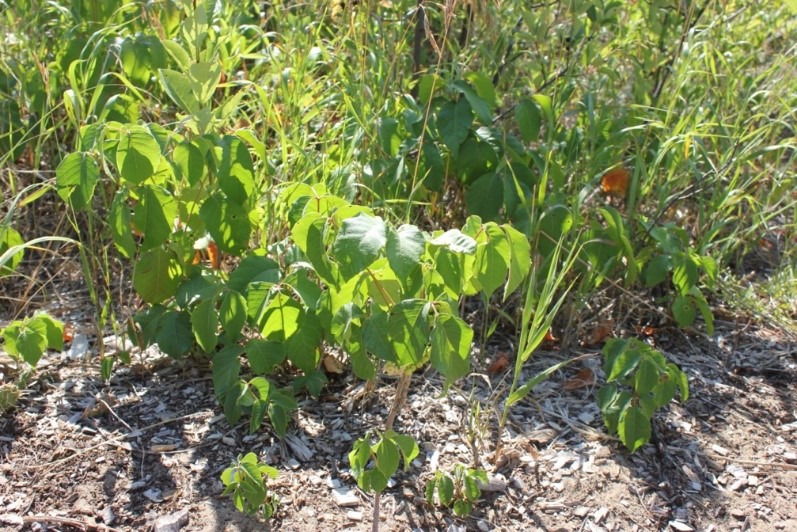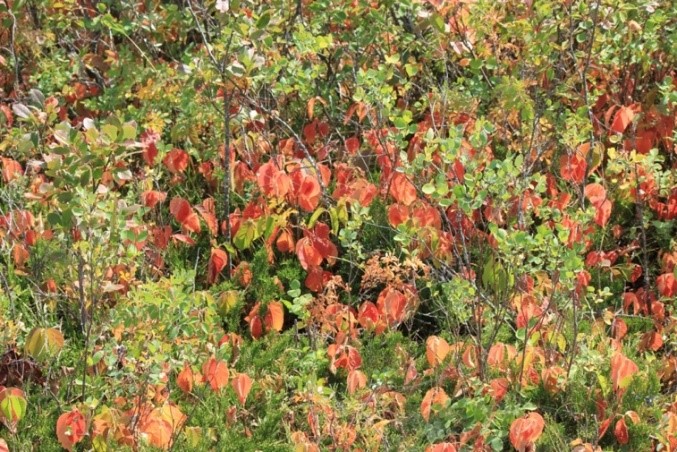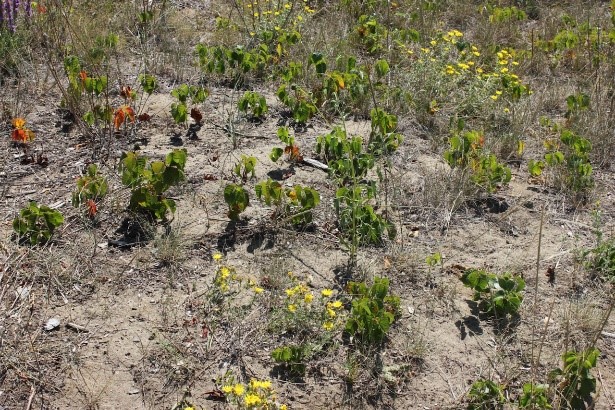“Leaves of Three, Let It Be”
Written by: Grant Wood
This phrase is in reference to the very common Poison Ivy plant (Toxicodendron rydbergii) which can be found at Beaver Creek, Cranberry Flats and along the Meewasin trail. “Let it be” means do NOT touch this plant, as the leaves exude an oil, which can cause a severe rash on skin.
Poison Ivy is found across Canada but can have different forms. In Saskatchewan it most commonly grows as a low spreading shrub with short woody stems arising from the ground. Most people do not recognize it as a woody plant. Plants tend to be 20 to 30 cm tall but can vary depending on their growing environment. Seldom do you see one or two plants, as poison ivy has underground rhizomes that help the plant spread widely over large areas.
The plant has odd compound leaves with three broad leaflets per leaf, each with a short petiolule attached to a long petiole which connects to the stem. The leaflet margins can vary from entire (smooth) to partially serrate (toothed). Leaflets tend to be ovate in shape and can be 10 to 15 cm long and 5 to 7 cm wide
 Newly formed leaves can have a distinct reddish tinge, while older leaves turn a brilliant red in autumn which alerts trail visitors to the presence of the poison ivy. These are not a showy plant that stands out, so people often come in contact with poison ivy but don’t feel the pain until a day later.
Newly formed leaves can have a distinct reddish tinge, while older leaves turn a brilliant red in autumn which alerts trail visitors to the presence of the poison ivy. These are not a showy plant that stands out, so people often come in contact with poison ivy but don’t feel the pain until a day later.
Flowers are small and fairly hard to see as they form under the leaves, along the woody stem. Flowers form in June. The fruit is a drupe which looks like a berry with one seed per fruit, found in clusters near the base of the plant, hidden by the leaves. Fruits are off-white, round and hard in clusters. Fruits are considered poisonous to humans and can cause severe gastrointestinal distress if eaten.
Plants are commonly found near bushes and other treed areas.

If you do come in contact with poison ivy it is best, as soon as possible, to wash the area with plenty of soap and water. The soap dilutes the oil and reduces the severity of the rash. Rashes often do not become apparent for up to 24 hours and can last for days or weeks. Sometimes the rash can be very itchy and painful.
Pets can be affected if they come in contact with poison ivy and can spread the oil from their fur to their owners, so keep your pets under control. If you know there is poison ivy in the area, it would be a good idea to thoroughly wash your pets when you get home, to remove any potential oil on their fur, which could spread to you.

Stay on the paths as this reduces your chances of coming in contact with poison ivy. Familiarize yourself with the plant so you can easily identify it, and “watch where you walk”.
If you see Poison Ivy out in the Meewasin Valley please contact the Meewasin team at meewasin@meewasin.com or our main office line at 306-665-6887.

You can also use the iNaturalist App to report this.
Come join us by checking out the volunteer schedule at meewasin.com/volunteerschedule/



